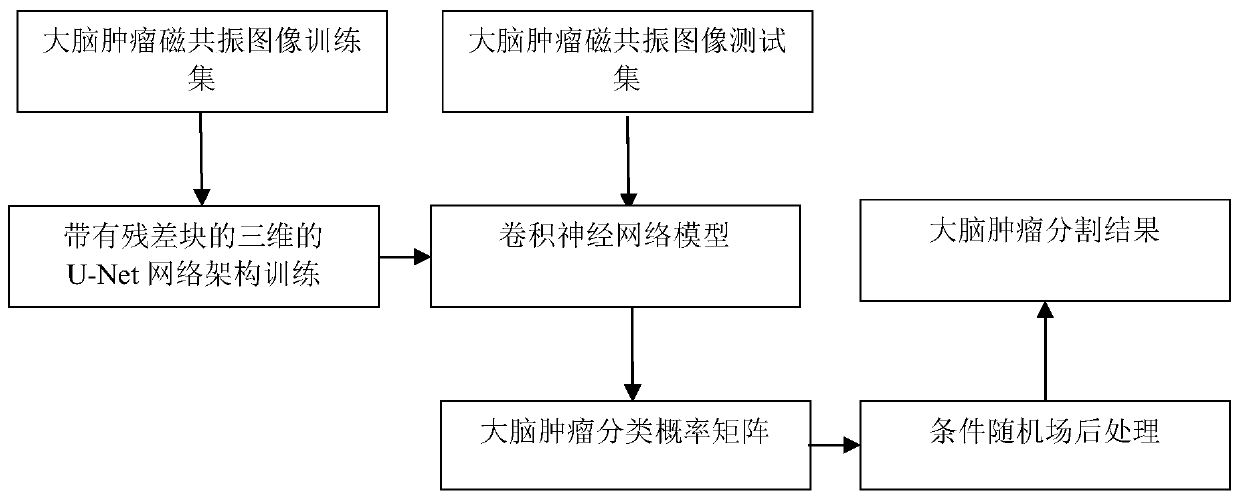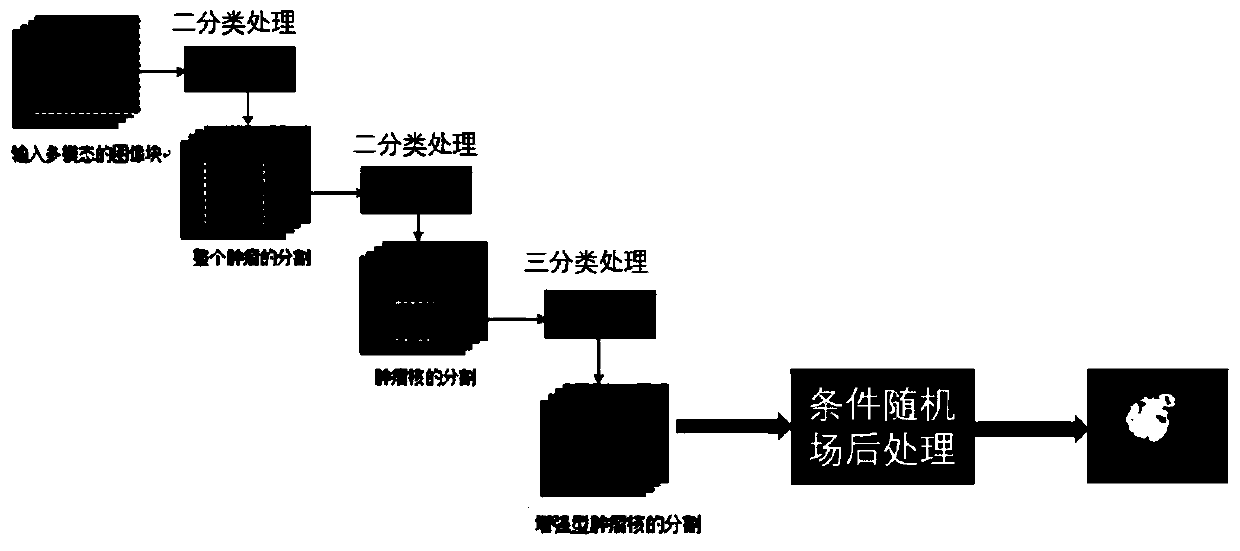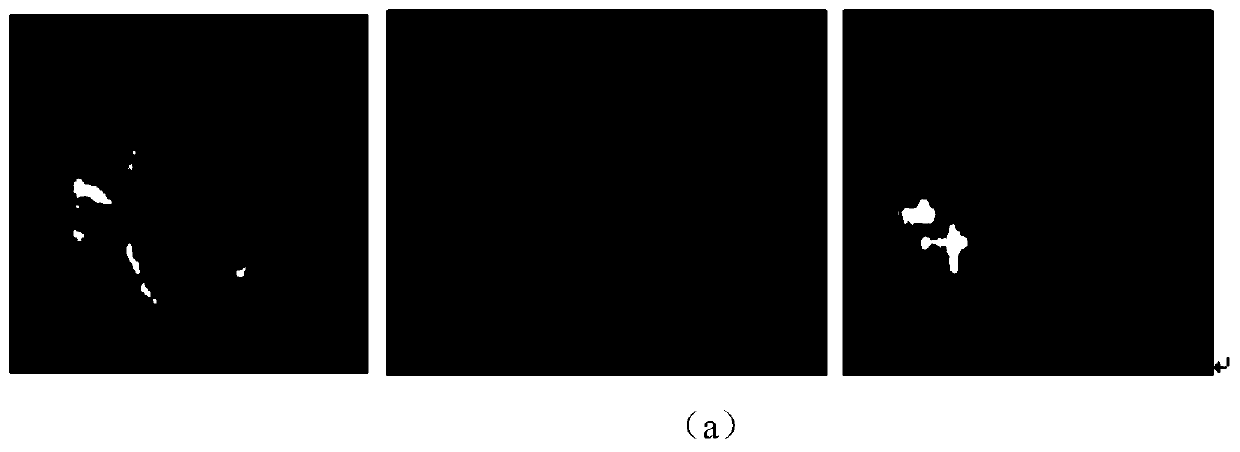Three-dimensional U-Net brain tumor segmentation method fusing conditional randomness and residual errors
A conditionally random, three-dimensional technology, applied in image analysis, image data processing, image enhancement, etc., can solve problems such as gradient disappearance, gradient explosion, and network performance degradation, and achieve good results, good learning ability, and simplified problems.
- Summary
- Abstract
- Description
- Claims
- Application Information
AI Technical Summary
Problems solved by technology
Method used
Image
Examples
Embodiment Construction
[0042] The technical solutions provided by the present invention will be described in detail below in conjunction with specific examples. It should be understood that the following specific embodiments are only used to illustrate the present invention and are not intended to limit the scope of the present invention.
[0043] A three-dimensional U-Net brain tumor segmentation method with random and residual fusion conditions provided by the present invention first divides the obtained brain magnetic resonance image data set into a training set and a test set, and then processes based on the training set and the test set, Its specific process and framework are as follows: figure 1 , figure 2 shown, including the following steps:
[0044] Step 1, conduct three-layer cascaded network architecture training on the training set to obtain the model of the convolutional neural network
[0045] Step 1-1, for example image 3 The four modal magnetic resonance images of Flair, T1, T1c...
PUM
 Login to View More
Login to View More Abstract
Description
Claims
Application Information
 Login to View More
Login to View More - R&D
- Intellectual Property
- Life Sciences
- Materials
- Tech Scout
- Unparalleled Data Quality
- Higher Quality Content
- 60% Fewer Hallucinations
Browse by: Latest US Patents, China's latest patents, Technical Efficacy Thesaurus, Application Domain, Technology Topic, Popular Technical Reports.
© 2025 PatSnap. All rights reserved.Legal|Privacy policy|Modern Slavery Act Transparency Statement|Sitemap|About US| Contact US: help@patsnap.com



